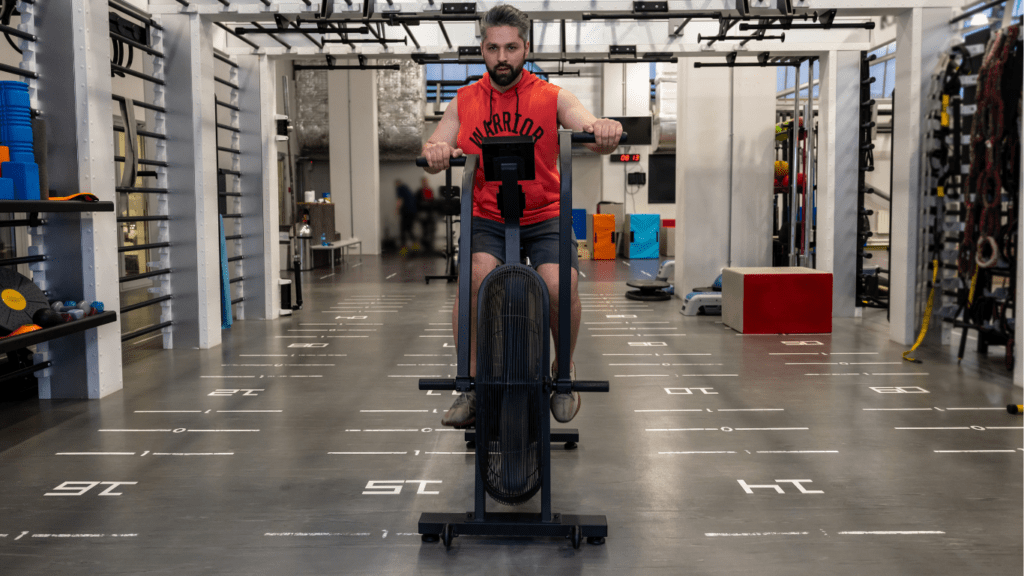Understanding Cycling Endurance
Cycling endurance refers to your ability to sustain prolonged physical effort while riding. It’s essential for both long-distance rides and challenging terrains.
What Is Cycling Endurance?
Cycling endurance is the physical capacity to continuously perform at a moderate to high intensity for extended periods. This involves:
- efficient cardiovascular function
- muscular strength
- effective energy use
Experienced cyclists often maintain a steady pace over various distances, leveraging their developed endurance to ride further and faster with less fatigue.
Why It Matters for Cyclists
Cycling endurance matters because it directly impacts performance and enjoyment. Enhanced endurance reduces fatigue, enabling longer rides with less strain.
For competitive cyclists, strong endurance is critical in maintaining speed throughout races. For casual riders, it means enjoying longer rides without feeling exhausted. This leads to better overall cycling experiences and fewer recovery days.
Essential Cycling Gear for Endurance Training
Building cycling endurance requires not only consistent training but also the proper gear. The right equipment enhances performance, comfort, and safety during long rides.
Choosing the Right Bicycle
Selecting the appropriate bicycle is crucial for endurance training. Road bikes, which are lightweight and designed for speed on paved surfaces, are ideal for long-distance rides.
Ensure the frame size suits your height and inseam to prevent discomfort and injury.
High-quality components like a carbon fiber frame, endurance-specific geometry, and efficient gear systems enhance performance and endurance. Consult with a specialist to find a bike that fits your needs.
Must-Have Accessories for Long Rides
Essential accessories make enduring long rides easier and more comfortable. First, invest in padded cycling shorts to minimize saddle sores.
Hydration systems like water bottles or hydration packs maintain fluid levels. Energy gels or bars provide necessary nutrients during extended rides.
A reliable GPS bike computer tracks distance, speed, and route. For safety, include a quality helmet, front and rear lights, and a repair kit with a spare tube, tire levers, and a mini pump.
Proper shoes with cleats improve pedaling efficiency and reduce foot fatigue.
Developing a Training Plan
Building cycling endurance from scratch requires a structured training plan. A well-designed program focuses on steady progress and measurable goals.
Setting Realistic Goals
I start by setting realistic goals. Short-term and long-term goals give direction and maintain motivation. For instance, target riding 20 miles in one go within the first month, progressing to 40 miles after three months.
Goals should be specific, measurable, attainable, relevant, and time-bound (SMART).
Progressive Overload Principle in Cycling
To improve endurance, I apply the progressive overload principle in my cycling routine. This means gradually increasing the intensity and volume of training.
For example, each week, increase the distance by 10%, ensuring the body adapts to the new demands. This avoids plateaus and reduces the risk of injury.
Consistently applying progressive overload helps develop efficient cardiovascular function, stronger muscles, and better energy utilization.
Nutrition and Hydration Strategies
Optimizing nutrition and hydration is essential for building cycling endurance. Proper fueling helps maintain energy levels and prevent premature fatigue.
Eating for Long-Distance Rides
Consuming the right foods enhances energy and performance during long rides. Incorporating carbohydrates, proteins, and healthy fats ensures balanced nutrition.
Top off glycogen stores the night before a long ride by eating a meal rich in complex carbohydrates, such as whole grains, vegetables, and legumes.
On the morning of the ride, a balanced breakfast including oatmeal, fruits, and lean proteins helps maintain energy.
During the ride, consume easily digestible carbohydrates, like energy gels, bananas, or sports bars, every 30-60 minutes.
For rides exceeding two hours, include small amounts of protein and fat, like nuts or a peanut butter sandwich, to sustain energy levels.
Staying Hydrated on the Bike
Staying hydrated is critical for maintaining performance and preventing dehydration. Drink water consistently before, during, and after the ride.
Pre-hydrate by drinking 16-20 ounces of water two hours before starting the ride.
During the ride, aim to drink 5-10 ounces of water every 15-20 minutes. For rides longer than an hour, consider electrolyte drinks to replenish lost sodium and potassium.
Monitor hydration by checking the color of your urine. Clear or light yellow indicates proper hydration, while dark yellow suggests dehydration.
By strategically managing nutrition and hydration, you maintain optimal energy and performance, crucial for building cycling endurance from scratch.
Rest and Recovery

Rest days and recovery play a critical role in building cycling endurance. Muscles repair and strengthen during these periods, making future rides more efficient and less strenuous.
Importance of Adequate Sleep
Adequate sleep significantly affects recovery. During sleep, muscles repair, growth hormone levels increase, and cortisol levels decrease.
Prioritizing at least 7-9 hours of sleep each night, especially after intense rides, enhances performance and overall well-being.
Active vs. Passive Recovery Techniques
Recovery techniques boost endurance. Active recovery includes low-intensity activities like light cycling or stretching to promote blood flow and reduce muscle stiffness.
Passive recovery involves complete rest or activities like massage and yoga. Choosing between these methods depends on ride intensity and personal preferences.
Regularly incorporating both techniques ensures optimal recovery and improved endurance.
Tracking Your Progress
Monitoring your progress is crucial for building cycling endurance. Using tools to track performance can help identify areas for improvement and maintain motivation.
Tools and Apps to Measure Endurance
Several tools and apps provide insights into cycling performance.
- Strava: Offers GPS tracking, route mapping, and performance analysis.
- Garmin Connect: Syncs with Garmin devices to track heart rate, distance, and speed.
- TrainingPeaks: Provides data on power output, heart rate, and workload.
- MyFitnessPal: Integrates nutritional tracking with exercise data for holistic monitoring.
- Zwift: Combines indoor training with virtual cycling, tracking various performance metrics.
Using these tools consistently helps gauge different aspects of endurance and overall fitness.
Analyzing Performance Over Time
Analyzing performance data over time helps identify trends and areas for improvement.
- Weekly Summaries: Review weekly data to track distance, time, and average speed.
- Monthly Comparisons: Compare monthly metrics to gauge progress and set new goals.
- Heart Rate Trends: Monitor heart rate variability to assess cardiovascular improvement.
- Power Output: Use data to measure changes in strength and endurance.
- Recovery Metrics: Evaluate recovery periods to ensure balanced training and avoid overtraining.
Tracking these elements allows for informed adjustments to the training plan, optimizing cycling endurance efficiently and effectively.

 I’m Brendamee McCartyierr, and as the founder of Cycle Smooth Ride Long, I'm thrilled to bring you the ultimate resource for all things cycling. Whether you're a seasoned rider or just starting on your cycling journey, our mission is to support your passion for two wheels with trusted advice, insightful reviews, and expert tips.
Cycling is more than just a hobby—it's a lifestyle that promotes health, freedom, and adventure. At Cycle Smooth Ride Long, we’re committed to making your ride smoother, longer, and more enjoyable by providing you with the latest in cycling news, nutrition advice, fitness tips, and gear reviews. We also cater to beginners, offering comprehensive guides to help you get started and build confidence on the road.
I’m Brendamee McCartyierr, and as the founder of Cycle Smooth Ride Long, I'm thrilled to bring you the ultimate resource for all things cycling. Whether you're a seasoned rider or just starting on your cycling journey, our mission is to support your passion for two wheels with trusted advice, insightful reviews, and expert tips.
Cycling is more than just a hobby—it's a lifestyle that promotes health, freedom, and adventure. At Cycle Smooth Ride Long, we’re committed to making your ride smoother, longer, and more enjoyable by providing you with the latest in cycling news, nutrition advice, fitness tips, and gear reviews. We also cater to beginners, offering comprehensive guides to help you get started and build confidence on the road.
